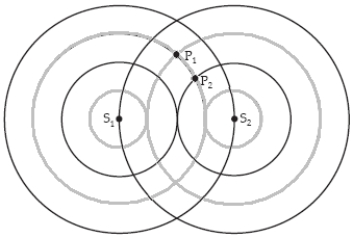A planar cross section through two spherical waves emanating from the sources S1 and S2 in the plane is shown in the figure. S1 and S2 are in phase. The black circles are one and two wavelengths from their respective sources. The lighter circles are one-half and one-and-a-half wavelengths distant from their respective sources. If the waves shown arriving at P1 both arrive with amplitude A, the resultant amplitude at point P1 is 
A) 0.
B)  .
.
C) A.
D)  .
.
E) 2A.
Correct Answer:
Verified
Q2: Estimate the distance (in cm) between the
Q3: Two slits are illuminated with red light
Q5: A planar cross section through two spherical
Q9: Light is incident on a double-slit. The
Q10: For small angle approximations
A) the angle must
Q12: Two slits are illuminated with green light
Q13: In a double slit experiment, the distance
Q17: Two slits separated by 0.10 mm are
Q22: The bright and dark bands you see
Q26: In an interference pattern, the wavelength and
Unlock this Answer For Free Now!
View this answer and more for free by performing one of the following actions

Scan the QR code to install the App and get 2 free unlocks

Unlock quizzes for free by uploading documents